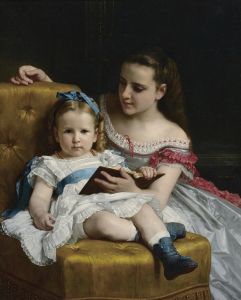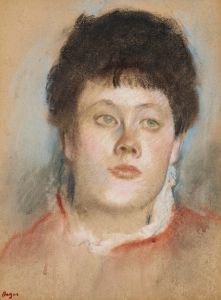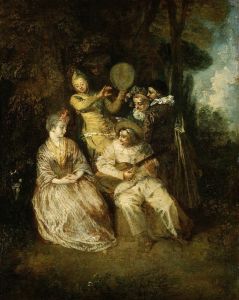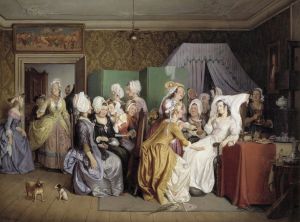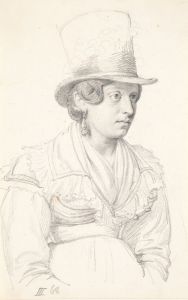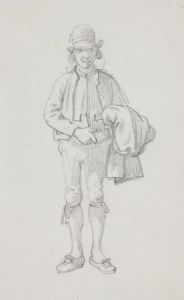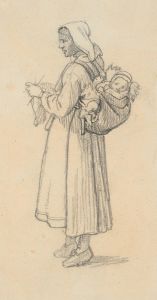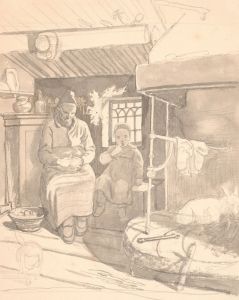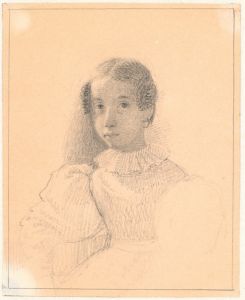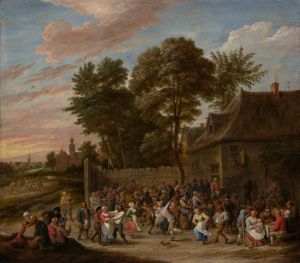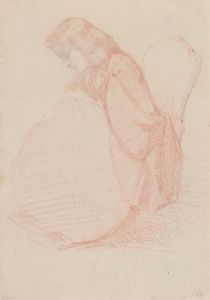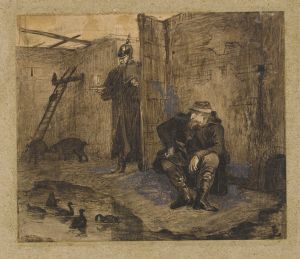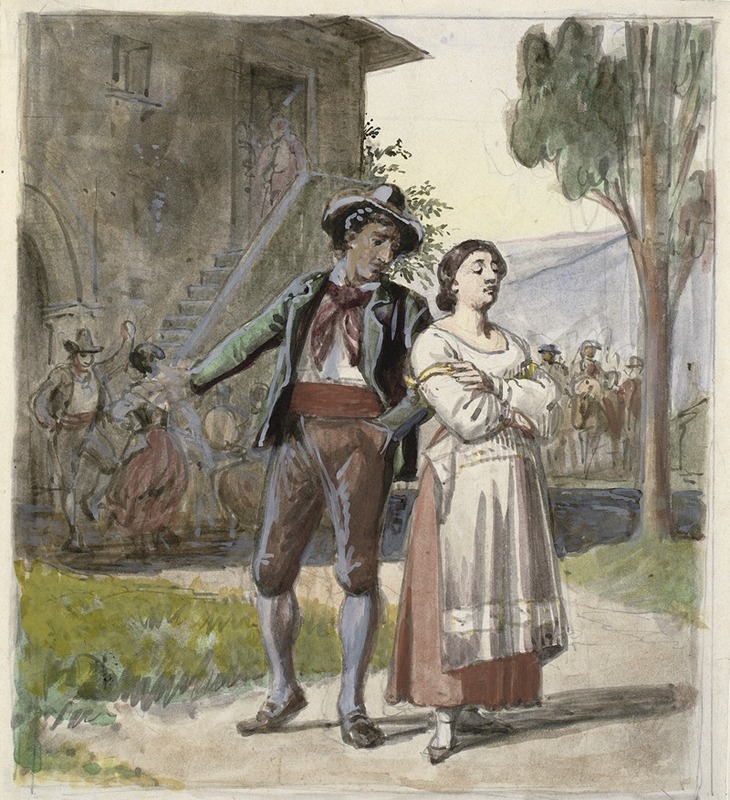
Ungt par, der er uenige, i baggrunden dansende foran et hus
A hand-painted replica of Wilhelm Marstrand’s masterpiece Ungt par, der er uenige, i baggrunden dansende foran et hus, meticulously crafted by professional artists to capture the true essence of the original. Each piece is created with museum-quality canvas and rare mineral pigments, carefully painted by experienced artists with delicate brushstrokes and rich, layered colors to perfectly recreate the texture of the original artwork. Unlike machine-printed reproductions, this hand-painted version brings the painting to life, infused with the artist’s emotions and skill in every stroke. Whether for personal collection or home decoration, it instantly elevates the artistic atmosphere of any space.
Wilhelm Marstrand was a prominent Danish painter in the 19th century, known for his vivid and lively depictions of everyday life and his contributions to the Danish Golden Age of painting. One of his notable works is "Ungt par, der er uenige, i baggrunden dansende foran et hus," which translates to "Young Couple Disagreeing, with Dancers in the Background in Front of a House." This painting exemplifies Marstrand's skill in capturing human emotions and interactions within a social context.
Marstrand was born on December 24, 1810, in Copenhagen, Denmark. He studied at the Royal Danish Academy of Fine Arts, where he was influenced by the teachings of Christoffer Wilhelm Eckersberg, a central figure in the Danish Golden Age. Marstrand's work is characterized by its narrative quality, often depicting scenes from literature, history, and everyday life with a keen eye for detail and a sense of humor.
The painting "Ungt par, der er uenige, i baggrunden dansende foran et hus" is a fine example of Marstrand's ability to portray complex social interactions. The central focus of the painting is a young couple engaged in a disagreement, a theme that Marstrand explored with sensitivity and insight. The couple's body language and facial expressions convey a sense of tension and discord, while the background features a group of dancers, adding a contrasting element of joy and celebration to the scene.
Marstrand's use of color and composition in this painting reflects his mastery of the medium. The vibrant colors of the dancers' costumes and the lively atmosphere of the background contrast with the more subdued tones of the couple in the foreground, highlighting their emotional distance from the surrounding festivities. This juxtaposition serves to emphasize the isolation and intensity of the couple's disagreement amidst the merriment.
Throughout his career, Marstrand traveled extensively, drawing inspiration from his experiences abroad. His travels to Italy, in particular, had a significant impact on his work, as he absorbed the influences of Italian art and culture. These experiences enriched his artistic style, allowing him to infuse his Danish subjects with a broader, more cosmopolitan perspective.
Marstrand's contributions to Danish art were not limited to his paintings. He was also a respected teacher and served as a professor at the Royal Danish Academy of Fine Arts. His influence extended to a new generation of artists, helping to shape the future of Danish painting.
In summary, Wilhelm Marstrand's "Ungt par, der er uenige, i baggrunden dansende foran et hus" is a testament to his ability to capture the complexities of human relationships within a broader social context. Through his skillful use of composition, color, and narrative, Marstrand created a work that resonates with viewers, offering a glimpse into the dynamics of personal and social interactions during the Danish Golden Age. His legacy as a painter and educator continues to be celebrated in Denmark and beyond.





